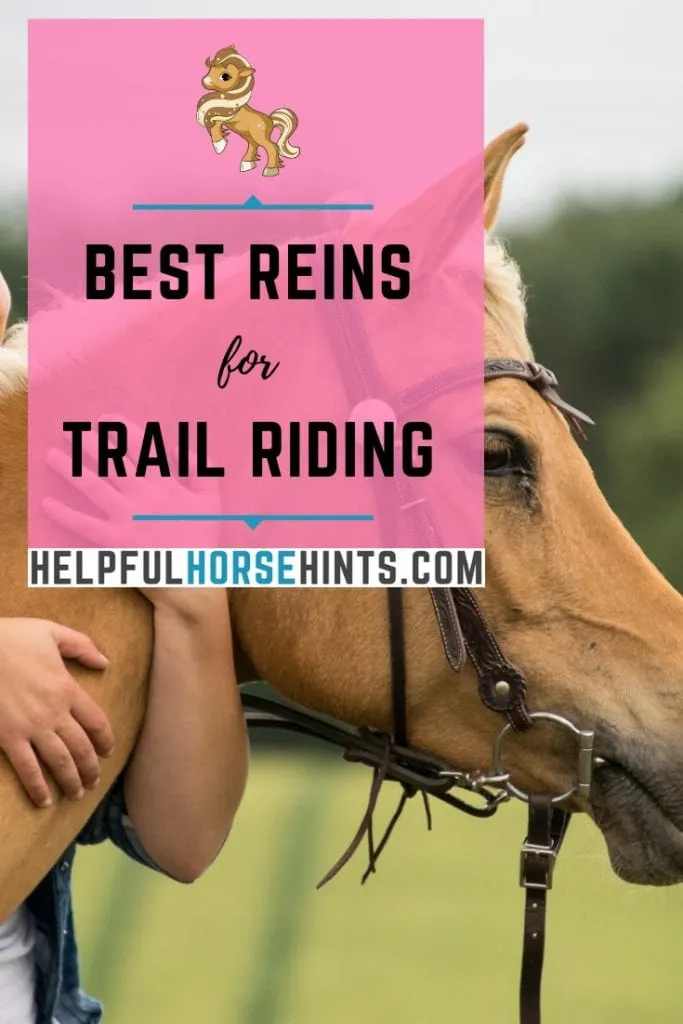If you poll ten different trail riders you will probably get ten different opinions on the best reins for trail riding. Trail rides are one of the most fun activities to enjoy with your horse.
The type of reins you use for trail riding really need to fit you, your horse and your style of riding. Will you be dismounting frequently? Will you need to tie up? All of these things should be taken into consideration.
Table of Contents
Loop Reins / Rope Reins
This type of rein is one continuous loop. Typically called rope reins , loop reins or barrel reins. The concept is the same, one end attaches to the bit on one side and loops around to the bit on the other side.
The benefit of a loop rein is there is nothing to drop or fall to the ground. If you let go of your reins for any reason, they should just fall right on your horses neck. This is great if you need to grab something from your saddle bag or tie your jacket to the back of your saddle.
- Perfect for every day riding, roping, contesting
- Made from natural, soft braided cotton
- 7 feetlong
- Scissor snap ends with nylon reinforcement
- Soft and durable
- Made from 5/8″ spun nylon
- Made by Weaver
Pros of Using Rope Reins for Trail Riding
- Loop reins can attach to a snaffle or a curb bit.
- They are most commonly made of leather, nylon or rope.
- Can be found in synthetic, braided, etc.
- Lots of colors usually available.
Cons of Using Rope Reins for Trail Riding
- Horse can get their leg stuck in it if the reins drop.
- Not as safe when ponying fractious young horses that may rear up and get a leg stuck in your horse’s reins.
- Not very easy to use with a bosal.
Mecate Reins
Mecate reins are traditionally made out of horse hair but can also be made out of rope. My favorite type of mecate reins are made out of yachting braid rope .
Mecate reins are typically attached to a snaffle type bit with slobber straps or tied directly to a bosal. This type of rein does not work well with a curb or shanked bit.
A traditional mecate rein looks like a rope rein but has extra rope coming off the left side. This extra rope is designed to be able to get down off your horse and lead him easily.
Typically, the tail end or lead portion of the mecate will be looped through the belt loops or attached through the saddle. This way it is ready in case the rider needs to dismount.
Pros of Using Mecate Reins for Trail Riding
- Mecate reins can attach to a snaffle or a bosal.
- They are most commonly made of horse hair or rope.
- A variety of colors are usually available.
- Tail end of rope can be used for leading.
- Reins can be used to tie horse with a special knot that avoids putting pressure on the mouth (see video).
- Weight of slobber straps when used with snaffle bits can provide for a really apparent “release”. Horses tend to be able to better feel the rider pick up on or drop the reins for training purposes.
Cons of Using Mecate Reins for Trail Riding
- Horse can get their leg stuck in it if the reins drop.
- Not as safe when ponying fractious young horses that may rear up and get a leg stuck in your horse’s reins.
- Not recommended for use with a curb.
- Improper tying with lead end can result in damage to the horse’s mouth.
Split Reins
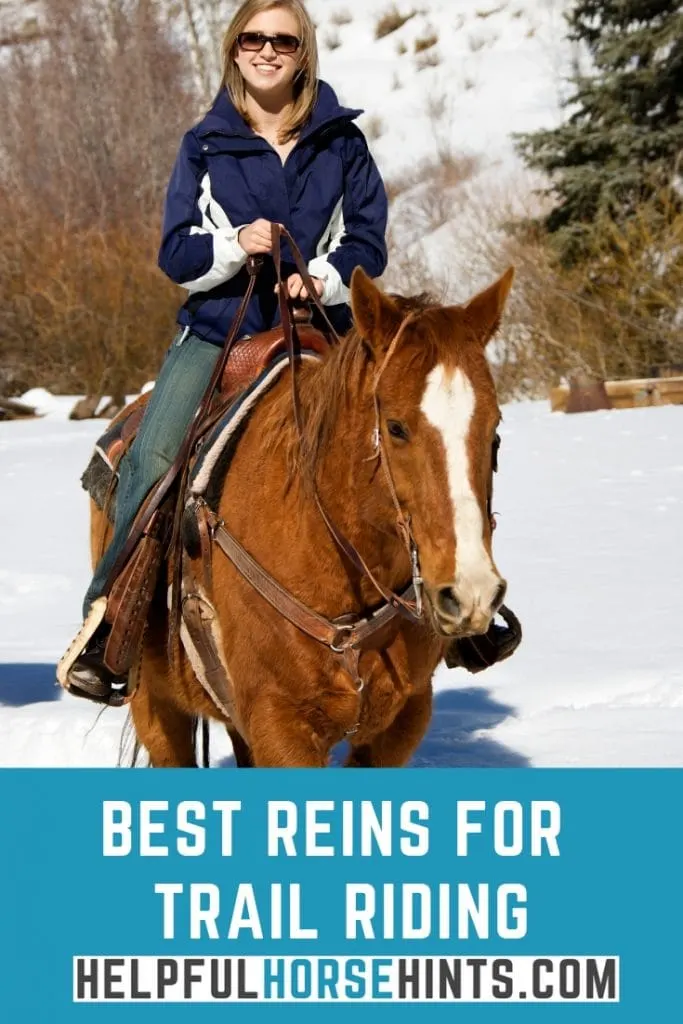
Traditional split reins commonly used in the western world but can be good for
For me personally, split reins are the only reins I’ll use if I think I may be ponying any horse. After having a couple of really close calls with a horse rearing while being ponied, I just won’t take the risk to ride in loop reins while ponying.
Split reins come in leather, nylon, cotton , etc as well as multiple colors. They also come in different lengths. On my taller stock horses with a long neck, I prefer an 8’ rein. On arabs or smaller horses, I like a 7’ rein.
If you are unsure what size to try, 7’ is a good length to start with. I typically go with a ¾ or ⅝ inch width as a personal preference. The 8’ reins can feel “too long” if you aren’t used to them and 7’ is still a nice, long rein.
With split reins, a big factor is going to be quality. Quality matters for all reins but especially so with split reins. When using a leather rein, you want to make sure to invest a few extra dollars for a higher quality product. It is important the reins are supple enough to lay nicely.
There are several “economy” brands out there. Commonly they sell a 6’ rein, which may be OK for a pony, but the quality is such to make them pretty useless for trail riding.
- Hermann Oak Harness Leather
- Four Step leather Finish for Exceptional Feel
- Stainless Steel Buckle Bit Ends
- Made by Weaver Leather Mt. Hope, Ohio
- Hand rubbed for a great feel
- Weighted ends for a working tack feel
- Extra heavy harness leather construction
- Dressed with butter for the ultimate in performance
Pros of Using Split Reins for Trail Riding
- Split reins can attach to a snaffle or a curb bit.
- They are most commonly made of leather or rope.
- A variety of colors are usually available.
- Either rein can be used for leading.
- Safest option when ponying another horse out on the trail.
Cons of Using Split Reins for Trail Riding
- Easier for one rein or the other to drop to the ground.
- Shouldn’t be used for tying horses.
- Not recommended for use with a bosal.
- Economy products common in the market are difficult to use.
Considerations on Materials and Construction
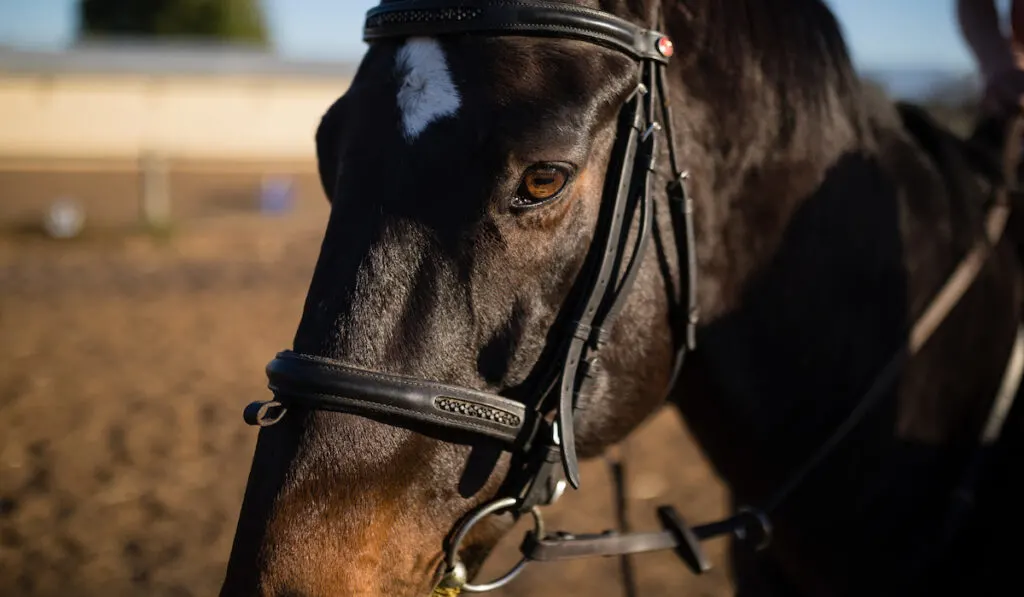
Leather Quality
Leather quality is a big one. With reins, you really want to invest in soft, supple leather. There are lots of great brands out there but there are lots of not so great brands as well. Great reins are soft, supple and easy to hold.
Rope Reins
Reins made out of rope can be awesome or can be horrible. Low quality rope has a tendency to fray and get very fuzzy. This makes the reins more likely to attract burrs, dirt, etc.
When looking at buying reins made out of rope I recommend a nice, tight yachting braid. In fact, on any type of rein except split reins, yachting braid is my #1 go to material.
Keep in mind that rope reins are going to be more likely to absorb and hold water, sweat, etc. This can make them heavier. On the plus side, they are typically wider and softer to hold than leather reins.
Cotton Braided Reins
Cotton reins are most commonly white and very soft. You will most often see this type of rein in rope reins or split reins. They are very comfortable to handle.
- Super soft braided cotton
The caveat to cotton reins is that they tend to have much more of a stretch to them. I love the softness, I don’t always want the stretch. Still, they work nicely for trail riding.
They will absorb water much more easily than rope reins. Cotton is, by nature, absorbent. That combined with the fact they are typically more loosely braided means they can absorb water more readily.
Synthetic Reins
These used to be all the rage when I was younger. I was training my arabian for her first endurance race and I wanted a set of these so badly!
I’ve only ridden in a pair once, when I was younger, and I don’t remember having a problem with them. Have you ridden in synthetic reins? Let me know your opinion of them in the comments below!
Rein Attachments
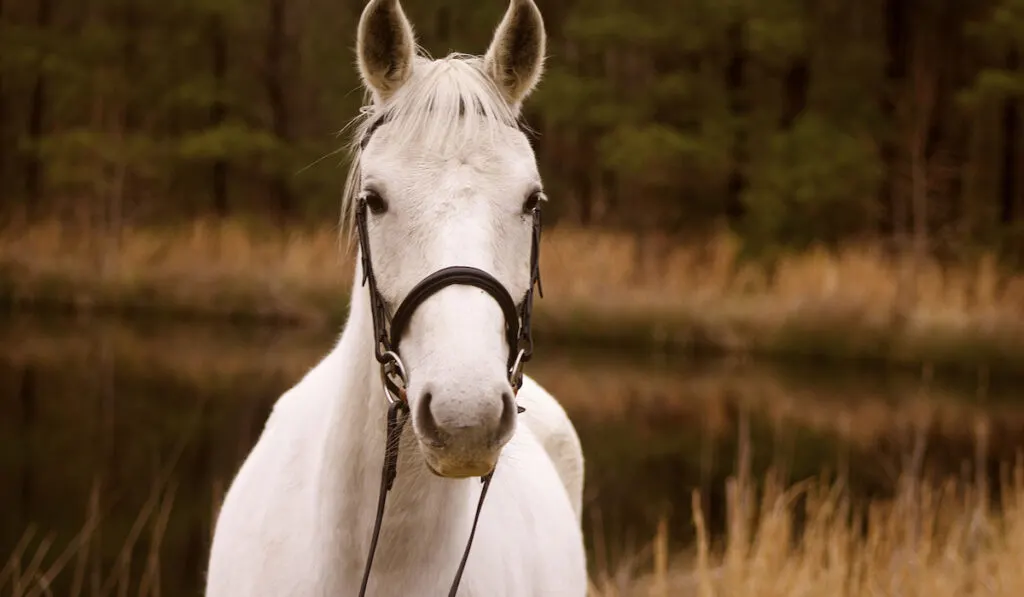
Direct Attachment
With a direct attachment, the reins connect directly to the bit without any additional hardware. This means that if the horse steps on the reins or the reins get caught, there is no intermediate hardware to break. The reins will break and may need to be replaced.
Luckily, you shouldn’t have to worry about reins breaking on you too often. Really, it’s something you should try to avoid.
Quick Change Reins
There are different ways reins can be attached to the bit with a direct rein attachment. The one I prefer is using quick change or easy change reins. These are reins that usually have a tab and loop system where they attach to the bit making them very easy to change.
- Durable, Weather Resistant Hermann Oak Russet Harness Leather
- Leather Tab Bit Ends for Easy Bit Changes
- Measures 5/8″ x 8′
- Made by Weaver Leather Mt. Hope, Ohio
- 7′ 4″ Long x 5/8″ Wide
- Tan/Silver
- Quick Change Split Reins are Amish made from supple quality harness leather. Oilded for a soft, broken-in feel. Quick Change feature is designed to allow riders to change out reins, bits and headstalls effortlessly. Lightweight reins ensure a great comfortable grip. Features rawhide accents and studs on each end for unique look. Measures 7′ 4″x 5/8″ wide.
Buckle End Reins
Other commonly used attachments are buckles. This is my second preference to quick change reins. The only con to using buckle attachments is that they can be hard to change if the leather has stiffened for any reason.
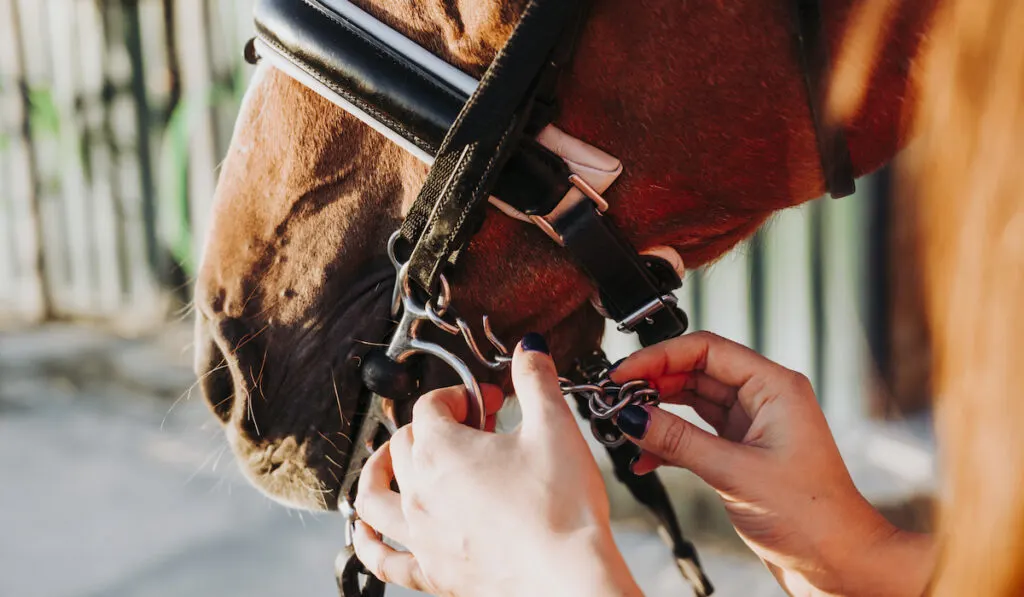
Chicago Screw Reins
Commonly you will see reins with a chicago screw attachment. The advantage to these is they can look really pretty if you use custom silver chicago screws . This type of rein attachment is nice for a show bridle or if you want to look really snazzy on the trail.
The only con to the chicago screw attachment is that they can sometimes loosen and that can be a pain if it happens while trail riding. They can also be difficult to remove and easy to lose.
Rein Hobbles
These are typically made out of braided rawhide but can also be made out of rope. They are a really nice, quick way to attach the rein to the bit. When using rawhide rein hobbles, keep in mind they can dry out and crack so they do need to be regularly maintained (like all tack).
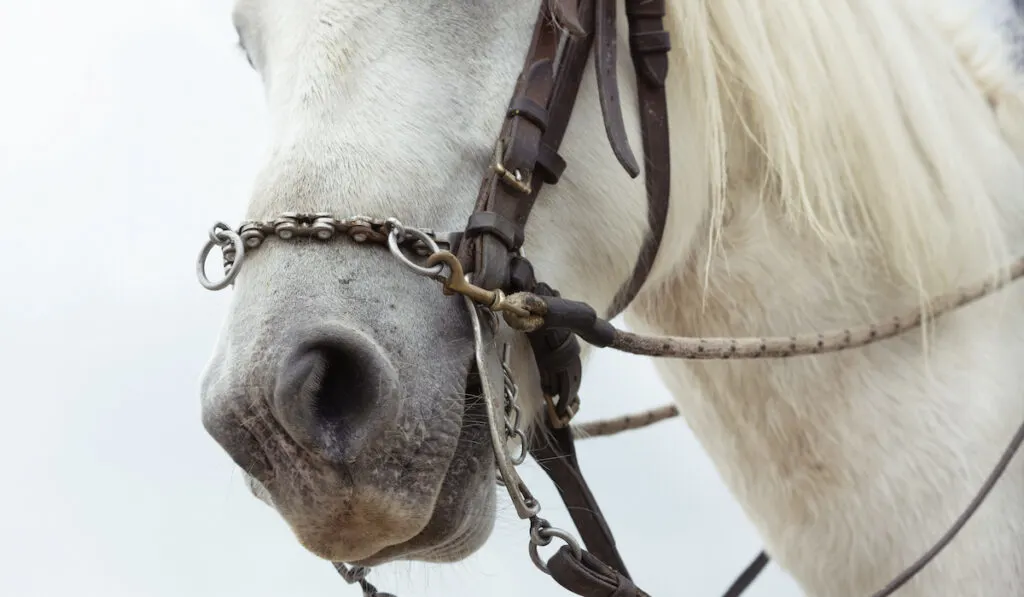
Water Loops
Water loops are a second piece of leather added to the end of your rein that is typically attached with leather ties. These are, in my opinion, better that chicago screw reins because you can more easily change them out. The leather tie straps, however, can get super tight and they can get brittle and crack or break if they dry out.
Rein Snaps
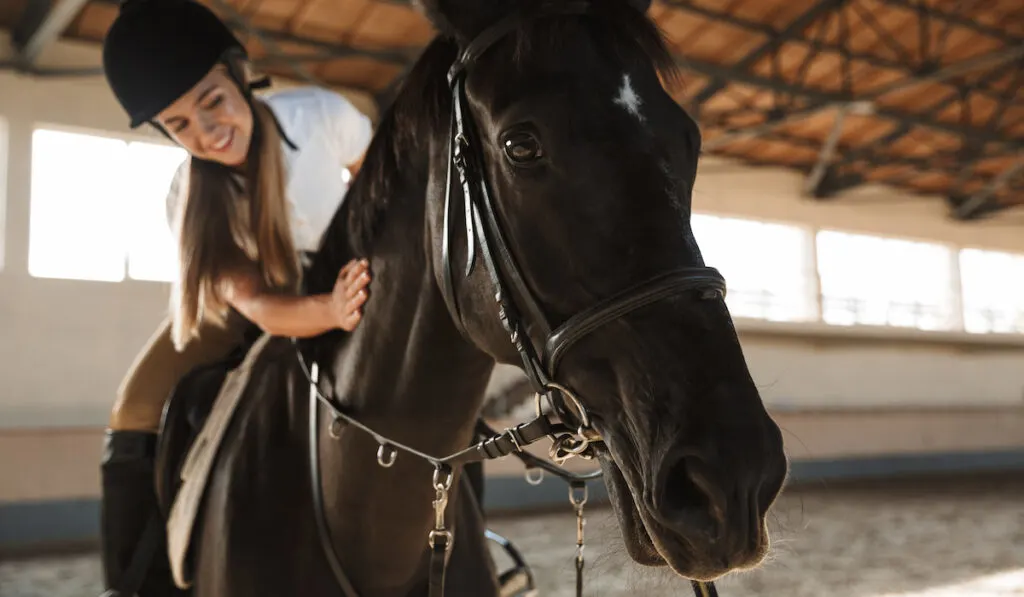
Direct Attachment
Similar to the other direct attachment methods listed above, some bridles have snaps built-in. This is typically seen in braided or cotton reins where the snap is braided right into the rein. I think snaps can be a great convenience but if I use snap reins, I prefer them not to be built into the rein.
The problem with snaps being braided directly into the rein is that, if the snap breaks for any reason, the whole rein has to be thrown away.
Snaps as a Rein Add-On
If I am going to use snap reins, I prefer to add them on. They can be a great way to make chicago screw reins or waterloop reins more of a quick change type rein.
If I come across a good quality pair of chicago screw reins at a tack sale, I won’t hesitate to buy them but I’ll almost always add snaps!
Slobber Straps
Slobber straps are made out of leather and come in a variety of colors and styles . They can be super fancy with silver adornment or super simple.
Typically, slobber straps are used to connect a rope or mecate rein to a snaffle bit. They could also be used for a split rein made out of rope but that would be uncommon.
One of the biggest benefits to using slobber straps is that their added weight can make it much easier for your horse to detect when you are picking up on the reins and when you have released them. I love slobber straps for this reason. I feel like they really help me and my horse work on softness.
- Chestnut English bridle leather slobber straps
- Doubled and stitched for durability
- Mecate easily slides through the 5/8 inch holes
- Protect mecates from excessive wear
- Measure 2″ x 17″ (8-1/2 inch when folded)
- Basically a Mecate rein without the lead portion. Loop rein that attaches to the bit with Slobber Straps (Not Included in your purchase)
- This rope has a nice feel, not too stiff and not too soft
- 10′ feet long with the rope ends spliced (not melted) and small leather poppers.
- 30+ color and color combinations to choose from
- Please read detailed description below – SLOBBER STRAPS ARE NOT INCLUDED
The best reins for trail riding are whatever you are comfortable riding your horse with. I have a personal preference for yachting braid rope reins with slobber straps. I love these reins and I can use them to neck rein or direct rein, they feel good and I can make them long enough to have extra for a lead rope.
I encourage you to try out a few different types before making up your own mind. Remember that you should always choose quality over design. Don’t be afraid to be bold and try some bright colors though!
What is your favorite type of rein? Let me know in the comments below!
